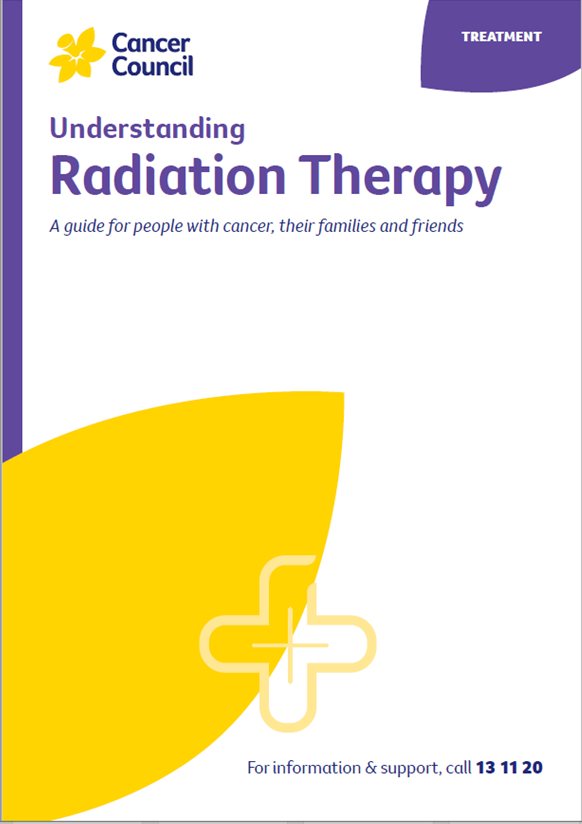- Home
- Ovarian cancer
- Treatment
- Radiation therapy
Radiation therapy for ovarian cancer
Also known as radiotherapy, radiation therapy uses a controlled dose of radiation to kill cancer cells or damage them so they cannot grow, multiply or spread. The radiation is usually delivered in the form of x-ray beams.
Learn more about:
- When and how is radiation therapy used?
- Side effects of radiation therapy
- Video: What is radiation therapy?
- Podcast: Making treatment decisions
When and how is radiation therapy used?
Radiation therapy is occasionally used to treat ovarian cancer that has spread to the pelvis or to other parts of the body. It may be used after chemotherapy or surgery to help reduce the symptoms of advanced cancer, or on its own as a palliative treatment.
For each radiation therapy session, you will lie on a treatment table under a large machine that delivers radiation to the affected parts of the body. You will not feel anything during the treatment, which will take only a few minutes each time. You may be in the room for a total of 10–20 minutes for each appointment.
How many radiation therapy sessions you have will depend on several factors, including the type and size of the cancer and where it is located. You may have a few treatments, or daily treatments for several weeks.
Side effects of radiation therapy
The side effects of radiation therapy vary. Most are temporary and disappear a few weeks or months after treatment. Radiation therapy for ovarian cancer is usually given over the lower abdominal/pelvic area, which can irritate the bowel and bladder. It can also cause infertility.
Common side effects include:
- feeling tired
- diarrhoea
- needing to pass urine more often
- a burning feeling when passing urine (cystitis)
- less often, a slight reddening of the skin around the treatment site.
More rarely, you may have some nausea or vomiting. If this occurs, you will be prescribed medicine to control it.
Radiation therapy can also have long-term side effects that may occur months or years after therapy. These can include scarring of the bladder, vagina and bowel, as well as a very small increase in the risk of cancers in the decades after therapy.
For more on this, see our general section on Radiation therapy.
→ READ MORE: Palliative treatment for ovarian cancer
Video: What is radiation therapy?
Watch this short video to learn more about radiation therapy.
Podcast: Making Treatment Decisions
Listen to more episodes from our podcast for people affected by cancer
Dr Antonia Jones, Gynaecological Oncologist, The Royal Women’s Hospital and Mercy Hospital for Women, VIC; Dr George Au-Yeung, Medical Oncologist, Peter MacCallum Centre, VIC; Dr David Chang, Radiation Oncologist, Peter MacCallum Cancer Centre, VIC; Prof Anna DeFazio AM, Sydney West Chair of Translational Cancer Research, The University of Sydney, Director, Centre for Cancer Research, The Westmead Institute for Medical Research and Director, Sydney Cancer Partners, NSW; Ian Dennis. Consumer (Carer); A/Prof Simon Hyde, Head of Gynaecological Oncology, Mercy Hospital for Women, VIC; Carmel McCarthy, Consumer; Quintina Reyes, Clinical Nurse Consultant – Gynaecological Oncology, Westmead Hospital, NSW; Deb Roffe, 13 11 20 Consultant, Cancer Council SA.
View the Cancer Council NSW editorial policy.
View all publications or call 13 11 20 for free printed copies.
